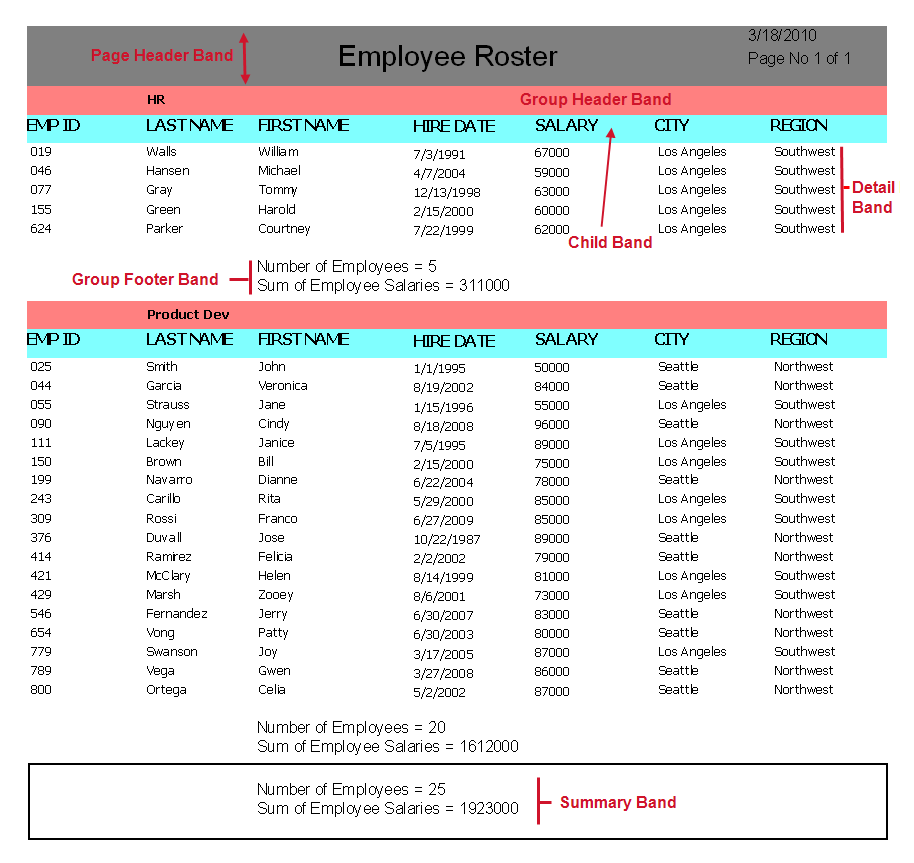Creating a Basic Banded Report
Introduction
This example utilizes the Employees table within the sample database and will produce a report (see figure below) of employees grouped by Department Name. This example demonstrates the use of a Page Header Band, Group Header Band, Child Band, Detail Band, Group Footer Band, and Summary Band.

Band types:
- Page Header Band: prints at the top of the page and contains the date and page number of the report.
- Page Footer Band: prints at the bottom of every page.
- Title Band: prints on the first page immediately below the page header band.
- Column Header Band:always prints at the top of the page after the Title Band.
- Detail Band: contains the data obtained from the Report query. The band will print repeatedly for each record. It will keep printing between the other bands until it runs out of room, then a new page will start.
- Group Header and Group Footer Bands:surround the Detail Band. Grouping is done by Department Name. These are used to structure data into groups, based on a data field or expression.
- Child Band: always prints beneath the Group Header Band and contains column titles. Linked to any other band and prints immediately after it. The band that it is linked to is called its parent band.
- Sub-Detail Band: displays one dataset while being linked to another dataset (called the Master). As each record is printed in the Master dataset, Argos will loop through the Sub Detail dataset. Sub-Detail Bands are not as efficient as other methods and should be used only when other methods cannot be used.
- Loop Band: prints its contents a user-specified number of times.
- Summary Band: prints on the last page of the report, immediately before the Page Footer Band, and contains the total number of employees and salaries for the entire company.